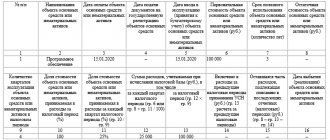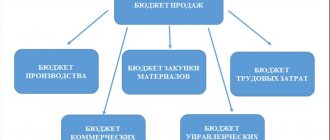prednalog.ru
In practice, accounting for office supplies is not a very pleasant process in the accounting department, since it requires painstaking and time-consuming work, with relatively small amounts in receipt documents. How to properly capitalize office supplies, in what account should they be accounted for, and how to write them off as cost? We will try to consider all these questions in the article, taking into account already established practice.
The most reliable way to reflect information, which is at the same time the most labor-intensive, is accounting for each unit of goods. Those. As it is written in the invoices, we register the goods: in quantity and amount.
For this accounting option, accounting is used. Here you can create a group “Stationery”, where the name of the product is indicated by name: “binder”, “folder with strings”, etc. Accounting for stationery is documented by accounting entry D-t 10 K-t 60.71, etc. .
In which subaccount should stationery be accounted for in this case?
In principle, there is no big difference here, but it is important to consolidate this position in the accounting policy.
Question: We constantly buy stationery for office needs.
Are office supplies considered materials and is it necessary to include all office supplies separately on the invoice each time? Maybe you can just indicate “office supplies on invoice”?
(“Accounting. Taxes. Law”, 2006, n 
“Accounting.
Anyway, all this is written off as expenses at the time of receipt.
Taxes. Law", 2006, N 8 Question: We constantly buy stationery for office needs. Are office supplies considered materials and is it necessary to include all office supplies separately on the invoice each time? Maybe you can just indicate “office supplies on invoice”? Anyway, all this is written off as expenses at the time of receipt.
Tatyana Rabotinskaya, chief accountant Answer: Yes, office supplies are recognized as materials in accounting. Assets used for the management needs of the organization are accepted for accounting as inventories (clause
2 PBU 5/01 “Accounting for inventories”). Account 10 “Materials” is intended for accounting for such property. The receipt and issue of stationery is reflected by the following entries: Debit 10 Credit 60 - stationery is capitalized; Debit 19 Credit 60 - input VAT taken into account; Debit 26 (44) Credit 10 - the cost of stationery is written off as expenses.
Acquisition through accountable persons
A more common case is the purchase of stationery through accountable persons.
Here we will name the transactions that are made when purchasing stationery through accountable persons:
Debit 71 – Credit 50 – funds were issued from the cash register for reporting
Debit 10 – Credit 71 – the advance report is approved, stationery is received into the warehouse.
Please note: tax authorities insist that in order to accept VAT for deduction, it is necessary to have an invoice (see, for example, letters of the Ministry of Finance of the Russian Federation dated March 9, 2010 No. 03-07-11/51, dated August 3, 2010 No. 03-07-11/ 335). If you have it, then take it to account 19:
Debit 19 – Credit 71 – “input” VAT taken into account
However, arbitration practice shows that it is possible to allocate VAT if there is a cash receipt indicating the amount of VAT (Resolution of the Presidium of the Supreme Arbitration Court of the Russian Federation dated May 13, 2008 No. 17718/07).
How to record office supplies
Fill out the release of stationery from the warehouse to the organization's divisions with a demand invoice in form No. M-11. In it, indicate the name of the department to which the stationery was issued, the account number on which the costs of maintaining this department are taken into account (for example, account 44 when transferring stationery to the sales department) (clauses 97 and 98 of the Methodological Instructions, approved by order of the Ministry of Finance of Russia dated December 28, 2001 G.
No. 119n). If stationery is released from a warehouse to an intermediate division of the organization (for example, to the administrative office), then at the time of transfer it is not known how much each division of the organization will consume (for example, accounting, purchasing department). In this case, as each department spends them, it is necessary to draw up acts (reports) in any form. They should indicate the name, quantity, cost of stationery and confirm the appropriateness of their use.
How to radically simplify stationery accounting
In many situations, advice from experienced colleagues will help more than official documents. It is for such questions that we are opening a new section “I Ask for Advice.”
In it, chief accountants share their experience and give practical recommendations. Questions that you want to discuss on the pages of the newspaper with colleagues, send to the editor by regular mail or e-mail with the note “I ask for advice.”
Contact us - UNP will find qualified advisers and sensible advice for you!
The first to seek advice from her colleagues through UNP was chief accountant Evgenia Zaturina from Tyumen: “Our company buys stationery very often and in large quantities.
Documents without which stationery and other office expenses cannot be written off
February 25, 2021
The range is huge. Until now, we received stationery according to the nomenclature and immediately wrote it off per unit cost. But sometimes there are so many types of purchased goods that the accountant spends several hours just entering information for all items.
13:09 Alexander Pogrebs, expert at SKB Kontur Magazine “” No. 2/2016 Webinar plan: Accountants take accounting of production materials seriously.
But stationery, drinking water, furniture and other equipment are written off with less scrupulousness. As a rule, even without supporting papers. But this threatens tax consequences for the company. Inspectors will cancel expenses that are not supported by documents. Let's start with stationery. Usually they are accepted for accounting on the basis of an invoice from the supplier or on the basis of an advance report (if the stationery was purchased by an employee).
Each accountant accounts for office supplies differently. Someone painstakingly arrives at each position. For example, like this: black Pilot gel pen, blue automatic ballpoint pen BIC, etc.
Inspectors will definitely not have any complaints about such accounting, but it requires a lot of time. Another option is not to count each item separately, but to write “Stationery” and indicate the quantity.
Account 10 in accounting: what it is used for, characteristics, subaccounts, postings
When conducting its business, a business entity uses material resources that immediately transfer the cost to the finished product, service, or work. Typically, they are used in the same production process. To record and summarize information about the movement of these objects, according to the current chart of accounts, special account 10 is used in accounting.
What is account 10 used for in accounting “materials”
The chart of accounts establishes that account 10 takes into account objects that are defined in accounting in accordance with PBU 5 as materials.
Materials include material assets that are used in the form of inventory, raw materials for the production of finished products, provision of services, performance of work, for resale if necessary, for the implementation of the management process of a business entity.
If material assets are acquired for the purpose of resale on an ongoing basis, then they are goods and a different account is used to account for them.
Accounting can be maintained for each unit of materials, batch, or group. The company independently determines how to record them based on the characteristics of its activities, as well as in order to ensure control over their availability and movement.
Attention! Materials located in the company may not belong to it by right of ownership, then they are recorded on off-balance sheet accounts (002 and 003).
The concept of raw materials and supplies in accounting
Materials are recognized as objects of human activity that are used mainly in one production process and fully transfer their value to the manufactured object.
Their useful life is less than one year. In accordance with the law, they are included in the working capital of the enterprise.
Raw materials are objects that are products of the mining industry or agriculture. They undergo a processing process and are fully used in the manufacture of finished products.
Materials are a product of the manufacturing industry, which is subsequently used to produce products, provide services, and perform work.
Materials are divided into the following groups:
- Raw materials and basic materials are the basis for the manufacture of finished products
- Semi-finished products of own production are an integral part of work in progress; they are not taken into account in account 10.
- Purchased semi-finished products are materials that have undergone pre-processing at other enterprises.
- Auxiliary materials - lubricants, containers, returnable waste, etc.
- Fuel is used as one of the sources of energy in economic activities.
- Spare parts are used for timely repair of equipment and other fixed assets.
- Construction materials - used in construction work and repair of buildings and structures.
- Household inventory - objects used in several production processes or in the management of an organization, classified as materials due to cost or short lifespan.
Account characteristics
To record information about the availability and movement of materials, account 10 is used in accounting.
This is an active account that has a debit balance characterizing the availability of materials on certain dates.
The receipt of materials is reflected in the debit of the account based on the primary documents received by the organization, and their disposal, including write-off to production, is reflected in the credit of the account. At the same time, the company prepares primary expenditure documents for disposal.
The final account balance is determined by adding the opening balance with the turnover on the debit of account 10, and subtracting from the resulting result on the credit of account 10.
What subaccounts are used?
The following subaccounts can be created for account 10:
- 10/1 “Raw materials and materials” - it records raw materials and the main types of materials that form the basis for the production of main products. Here you can also keep records of materials for auxiliary and technological purposes, as well as agricultural products intended for processing.
- 10/2 “Purchased semi-finished products and components, structures and parts” - this takes into account the cost of semi-finished products and components that are purchased for the production of products and require further refinement.
- 10/3 “Fuel” – this takes into account the availability and movement of fuel and lubricants for the company’s vehicles and equipment.
- 10/4 “Containers and packaging materials” - here all types of containers are recorded, as well as materials for their manufacture or repair.
- 10/5 “Spare parts” - here the accounting of spare parts intended for the repair of existing equipment, vehicles and other mechanical means is made;
- 10/6 “Other materials” - production waste, trimmings, shavings, etc. are taken into account here. Materials that were formed during the liquidation of the OS can also be taken into account here. The main thing is that the materials accounted for in this subaccount are not used as basic materials, fuel, spare parts, etc.
- 10/7 “Materials transferred for processing to third parties” - this takes into account materials that were transferred to third parties for the manufacture of products from them;
- 10/8 “Building materials” - the subaccount is used in developer organizations to account for materials used during construction and installation;
- 10/9 “Inventory and household supplies” – the account records the cost of tools, inventory, and household supplies;
- 10/10 “Special equipment and special clothing in the warehouse” - is intended to account for special equipment, equipment, special clothing, etc., which are stored in the warehouse.
- 10/11 “Special equipment and special clothing in operation, etc.” – designed to account for special equipment, equipment, workwear, etc., which are used in production.
Attention! An organization can open other sub-accounts necessary for proper accounting. Analytical accounting can be carried out by types, types, sizes, grades of materials, etc.
Which accounts does account 10 correspond to?
Account 10 can correspond with the following accounts:
From the debit of account 10 to the credit of accounts:
- Account 10 - when transferring materials between warehouses;
- Account 15 - when purchasing materials using accounts 15, 16 in accounting;
- Account 20 - when registering materials from the main production;
- Account 23 - when registering materials from auxiliary production;
- Account 25 - when recording materials that arose during the implementation of general production expenses;
- Account 26 - when recording materials that arose during the implementation of general business expenses;
- Cch. 28 – when registering irreparable defects as materials;
- sch. 29 - when receiving materials from service farms;
- sch. 40 - when adjusting the actual cost;
- sch. 41 - when converting goods purchased for resale into materials;
- sch. 43 - when converting finished products into materials;
- sch. 44 - when recording material that arose when incurring sales expenses;
- sch. 60 - upon receipt of materials from suppliers;
- sch. 66 - upon receipt of materials in the form of short-term trade credits or loans;
- sch. 67 - upon receipt of materials in the form of long-term trade credits or loans;
- sch. 68 - regarding fees or taxes attributable to the cost of materials;
- sch. 71 - upon receipt of materials from accountable persons;
- sch. 75 - when the founders contribute shares with materials;
- sch. 76 - upon receipt of materials from other suppliers, inclusion of the cost of services in the price of materials, etc.
- sch. 79 - upon receipt of materials from branches or head offices;
- sch. 80 - when making contributions from partnership participants in materials;
- sch. 86 - upon receipt of materials as targeted funding;
- sch. 91 - upon receipt of materials during the disassembly of OS objects;
- sch. 97 - adjustment of the cost of materials charged to deferred expenses;
- sch. 99 - when registering materials arising due to emergency circumstances.
According to the credit of the account, it corresponds with the debit of the following accounts:
- sch. 08 - when writing off materials for preparation for operation of non-current assets, capital construction, etc.;
- sch. 10 – when transferring materials between warehouses;
- sch. 20 - when releasing materials to main production;
- sch. 23 – when releasing materials to auxiliary production;
- sch. 25 – when releasing materials for general production needs;
- sch. 26 – when releasing materials for general business needs;
- sch. 28 - when releasing materials to correct defects;
- sch. 29 – when releasing materials to subsidiary farms;
- sch. 44 - when releasing materials for sales expenses;
- sch. 45 - for the amount of shipped materials, the revenue for which has not yet been recognized in accounting;
- sch. 76 - upon disposal of materials to another counterparty;
- sch. 79 - when transferring materials to branches or head offices;
- sch. 80 - when paying off a partner’s share with materials;
- sch. 91 - when writing off the cost of materials upon their disposal;
- sch. 94 - when a shortage of materials is detected;
- sch. 97 - when assigning the cost of materials to future expenses;
- sch. 99 - when writing off materials for emergency circumstances.
Accounting entries for the account
With a score of 10 the following entries can be made:
| Debit | Credit | Description |
| Materials receipt transactions | ||
| 10 | 10 | Transfer of materials from warehouse to warehouse |
| 10 | 15 | Materials accepted at discount prices |
| 10 | 20 | Accepted materials manufactured by the main production facilities |
| 10 | 20 | Return of unused materials to the warehouse |
| 10 | 23 | Materials manufactured by auxiliary production forces have been accepted into the warehouse |
| 10 | 28 | Accepted irreparable marriage |
| 10 | 29 | Materials produced by subsidiary farms have been accepted for accounting |
| 10 | 41 | Goods purchased for resale are used as materials |
| 10 | 43 | Finished products are transferred to the warehouse for use as materials |
| 10 | 44 | Return of materials issued for sales support |
| 10 | 60 | Receipt of materials from the supplier to the warehouse |
| 10 | 66 | Receipt of materials for short-term trade credit or loan |
| 10 | 67 | Receipt of materials for long-term trade credit or loan |
| 10 | 71 | Receipt of materials from an accountable person |
| 10 | 73 | Receipt of materials from personnel |
| 10 | 76 | Receipt of materials from other creditors |
| 10 | 79 | Receipt of materials from the head office or branch |
| 10 | 75 | Receipt of materials as a contribution to the authorized capital |
| 10 | 86 | Receipt of materials in the form of targeted financing |
| 10 | 97 | Receipt of materials from deferred expenses funds |
| 10 | 99 | Receipt of materials due to emergency or force majeure circumstances |
| 10 | 91 | Additional valuation of materials, proceeds from the sale or dismantling of an asset |
| Material write-off operations | ||
| 08 | 10 | Write-off of materials for preparing non-current assets for operation |
| 14 | 10 | Materials have been marked down |
| 20 | 10 | Materials transferred to main production |
| 23 | 10 | Materials transferred to auxiliary production |
| 28 | 10 | Materials transferred for correction of defects |
| 29 | 10 | Materials were donated to the needs of subsidiary farms |
| 44 | 10 | Materials were transferred for the needs of preparing main products for sale |
| 79 | 10 | Materials transferred to the head office or branch |
| 91 | 10 | Write-off of the cost of materials upon disposal or sale |
| 94 | 10 | Shortage of materials identified |
| 97 | 10 | The cost of materials is charged to deferred expenses. |
| 99 | 10 | Loss of materials written off due to emergency or force majeure circumstances |
Help us promote the project, it's simple: Rate our article and repost! ( 1 5.00 out of 5)
Source: https://buhproffi.ru/buhuchet/schet-10-v-buhgalterskom-uchete.html
I'm asking for advice. How to radically simplify stationery accounting
The first to seek advice from her colleagues through UNP was chief accountant Evgenia Zaturina from Tyumen: “Our company buys stationery very often and in large quantities.
The range is huge. Until now, we received stationery according to the nomenclature and immediately wrote it off per unit cost. But sometimes there are so many types of purchased goods that the accountant spends several hours just entering information for all items.
Is it possible to solve the problem by accounting for “officework” in some other way?” Yes, you can. Here are the options suggested by colleagues.
Option No. 1: register a consignment of goods as a unit Glavbukh LLC "TOR" from the city.
In Blagoveshchensk, Amur Region, Victoria Tsirulnikova advises drawing up an order from the director stating that office supplies are purchased only in the required quantity and are immediately put into operation.
Correct accounting of stationery
Only at first glance it may seem: office supplies are such a small thing to bother with their accounting.
As a result, the accounting department will receive all the office supplies according to the invoice as one unit and immediately write it off.
But as practice shows, many experienced and just beginning accountants make a lot of mistakes in recording office supplies on accounting accounts.
There are so many specialists, so many opinions regarding the attribution of purchased office supplies to certain synthetic accounts. But there are general rules, following which will save the accounting department from criticism from inspection bodies.
Methodological instructions for accounting for inventories, and more specifically, paragraph 49 of this document, reveals the basics of accounting for these operations: For the posting and acceptance of stationery purchased for cash or non-cash payment, a receipt order is issued (unified form No. M-4); Warehouse movement of material assets is recorded by type, size, and grade.
Documenting
The biggest difficulty that arises in the process of purchasing office supplies through accountable persons is the availability of necessary supporting documents (clause 56 of the Methodological Guidelines for Accounting for Inventory Production). In addition to drawing up an advance report, the accountable person must provide documents confirming payment and documents that allow you to determine a specific list of purchased goods:
- cash receipts, receipts for a cash receipt order, sales receipts (confirm payment);
- sales receipts, invoices, store invoices (confirm the range of goods).
Particular attention should be paid to sales receipts, which must contain all the details of the primary accounting documents given in Law No. 402-FZ “On Accounting” and contain a breakdown of the purchased goods by name: pens, office paper, notepad, stapler, etc. The general name “stationery” on a sales receipt is unacceptable!
When stationery supplies are received by an organization, a receipt order No. M-4 is drawn up for them (approved by Resolution of the State Statistics Committee of Russia dated October 30, 1997 No. 71a) or another primary document approved by your organization.
When releasing office supplies to users from the warehouse, a demand invoice (form No. M-11) is drawn up. You can save office supplies as expenses during their release in one of the following ways:
- at the cost of each unit;
- at average cost;
- at the cost of the first in time acquisition of inventories (FIFO method);
- at the cost of recent acquisitions (LIFO) - this method can only be used in tax accounting.
To what account should stationery be credited?
Copyright: Lori's photo bank Accounting for office supplies is a very painstaking job with relatively small amounts of expenses.
Nevertheless, it is necessary for an accountant to do this and it is important to figure out how to capitalize office supplies, what account to attribute them to, and how to write off used ones.
Office supplies (CS) are taken into account as inventories at actual cost, i.e. the amount of costs for their purchase (PBU 5/01 “Accounting for inventories”):
- or on the basis of an advance report with a sales/cash receipt attached to it, if the “stationery” was purchased by the accountable.
- according to the invoice issued by the supplier;
Reception and posting of CT is issued by receipt order form No. M-4.
The movement of stationery in the storeroom is carried out in materials accounting cards of form No. M-17 by type, name, grade, product group (if the appropriate CT accounting method is selected).
How to work with account 10 chart of accounts
All company assets that have a useful life of less than 12 months should be classified as inventories. For example, raw materials, materials, semi-finished products, components, packaging, fuel, inventory and other similar assets.
To systematize and generalize information about the cost and quantitative indicators of inventories, account 10 “Materials” is used (Order of the Ministry of Finance No. 94n). These requirements apply to non-profit organizations, commerce and small businesses. State employees use accounting accounts in accordance with Instruction No. 157n. Material reserves in a budgetary institution are reflected in the accounting account of the same name 0 105 00 000.
It is permissible to take into account values in two ways: at actual cost (clause 62 of Order No. 119n) or at accounting prices using 15 and 16 accounting accounts (clause 80 of Order No. 119n dated December 28, 2001).
The company independently chooses the accounting method suitable for the specifics of its activities. This choice must be justified in the accounting policies of the institution. Also in the accounting policy, indicate the forms of primary and accounting documentation that will be used to reflect operations on the movement of money.
The method for writing off materials from the 10th account should also be written down in the accounting policy. Three methods are allowed:
- Based on the average cost of inventories.
- Based on actual unit cost.
- FIFO method.
The cost of inventories may include not only the actual price paid, but also other costs. For example, consulting services, non-refundable customs and tax duties, non-refundable VAT, delivery costs, and other costs associated with the receipt of goods.
Opening sub-accounts for account 10
Order of the Ministry of Finance No. 94n determines that in order to organize complete, reliable and detailed accounting of the company’s material assets, the opening of additional sub-accounts is provided. This approach allows you to group all the organization’s inventory items by type.
NumberName
| 10.1 | Raw materials | Reflect material assets that are used to carry out the main activity |
| 10.2 | Semi-finished products | Components, components, structures and parts that are used in the main and auxiliary production cycles and processes |
| 10.3 | Fuel | Fuel and lubricants, gasoline, diesel fuel, gas, motor oils, etc. |
| 10.4 | Tara | Materials used as containers and (or) packaging |
| 10.5 | Spare parts | Spare parts used for repair and maintenance |
| 10.6 | Other inventories | Values not included in other groups |
| 10.7 | Materials for external processing | MPZ intended for external processing |
| 10.8 | Construction materials | To reflect information about the availability and movement of building materials from developers |
| 10.9 | Household equipment | Materials and equipment, accessories and equipment used to perform general economic work |
Please note that opening all accounts is not necessary. The organization independently decides which subaccounts will be used in accounting. So, for example, account 10.10 - what applies to a particular institution must be defined in the accounting policy. Typically, special equipment (special equipment) is included in this subaccount.
Features of inventory accounting
Account 10 belongs to the active group of accounts. Consequently, debit 10 of the accounting account (for dummies) reflects the receipt (increase) of material assets, and credit turnover reflects the disposal of assets from the corresponding accounting accounts. The ending balance can only be in debit. A credit balance indicates that there is an error in recording accounting transactions.
Inventory accounting needs to be detailed. To do this, provide for maintaining detailed analytical records in the context of items, batches, storage locations, materially responsible persons and departments.
The actual presence of MC must be periodically monitored. Accountants are required to conduct inventory checks to identify deviations from accounting indicators and actual availability. The reconciliation procedure and frequency should be established in the accounting policy.
Revolving balance sheet: accounting 10
When maintaining automated accounting, it is recommended to systematically generate interim reporting in order to control the movement of material assets.
One of such reports is the balance sheet for account 10.
The accounting document contains information on the availability of MH balances at the beginning and end of the reporting period, as well as on the movement (receipt and disposal) of materials during the reporting period.
SALT is a separate accounting register that reflects information on the availability of material assets at the beginning of the reporting period, information on the movement of inventories (receipts and disposals), and also indicates the amount of raw materials remaining at the disposal of the company at the end of the reporting period.
Principles for drawing up a balance sheet:
- The negotiable SV must necessarily disclose accounting information:
- balance at the beginning of the reporting period - quantity and value;
- cost and quantitative expression of Ministry of Health revenues;
- value and quantity of disposed assets (write-off);
- final balance on account 10.
- If the company has structural divisions, it is necessary to organize additional analytics. For example, create turnover sheets separately for each warehouse space. Indicators of the consolidated balance sheet reflect data for the organization as a whole and are used for reporting.
- Automation of accounting and compilation of WWS does not exempt the entity from the mandatory maintenance of warehouse cards for materials accounting. The card must be issued for one calendar year. Moreover, the document is drawn up for only one item number. It is not allowed to combine MH accounting in cards.
- Primary documents confirming the movement of raw materials must be drawn up on paper. Facts of changes in the indicators of inventories must be certified by the “live” signatures of responsible employees. Keeping records electronically requires certification of documentation with electronic signatures of the chief accountant or head of the company.
The statement reflects not only the value expression (rub.), but also quantitative accounting indicators (kg, m, pcs., units, etc.).
Example of filling out the OCB
Data from NPO "DOBRO" for March 2021. For inventories used by the organization to conduct its main activity:
- purchased MH for the amount of 200,000 rubles;
- released into production in the amount of 220,000 rubles;
- spoiled in the amount of 3000 rubles.
Balance sheet for accounting account 10 for March 2021:
Download
Accounting and control
A company can organize accounting in two ways.
Option #1.
First, write out a paper document. For example, a request for an invoice for the movement of goods and materials. Then the responsible persons carry out the transfer and complete the execution of the primary document. And only then are they transferred to the accounting department. The responsible accountant enters the data into the program.
Option number 2.
An accountant or warehouse worker enters information about the movement of inventories into a specialized accounting program. Then it prints out the document and submits it to the responsible persons for signature.
Regardless of the chosen accounting option, do not forget about errors. However, accounting indicators must always correspond to actual data. Therefore, it is necessary to organize systematic checks. It is recommended to carry out monthly reconciliations of SALT data with actual warehouse accounting indicators.
Instruct the responsible accountant to carry out counter reconciliations with financially responsible persons. These can be not only MOLs for warehouses, but also for all departments where inventories are stored. Correct any errors found in accounting in accordance with current standards. It is advisable to carry out control activities before the closing of the reporting period.
Accounting entries for account 10, examples
| Operation | Debit | Credit |
| MH were shipped to the enterprise warehouse from suppliers, receipt was reflected | 10 | 6076 |
| Construction materials for repairs were purchased by an accountable person | 10.8 | 71 |
| Semi-finished products transferred to main production | 20 | 10.2 |
| Fuel written off as general business or production expenses | 2526 | 10.3 |
| The shortages of the Ministry of Health identified as a result of the inventory were written off | 94 | 10 |
| Reflects internal movement of materials between shopping centers, departments, storage locations | 10 | 10 |
Source: https://gosuchetnik.ru/bukhgalteriya/kak-rabotat-so-schetom-10-plana-schetov






